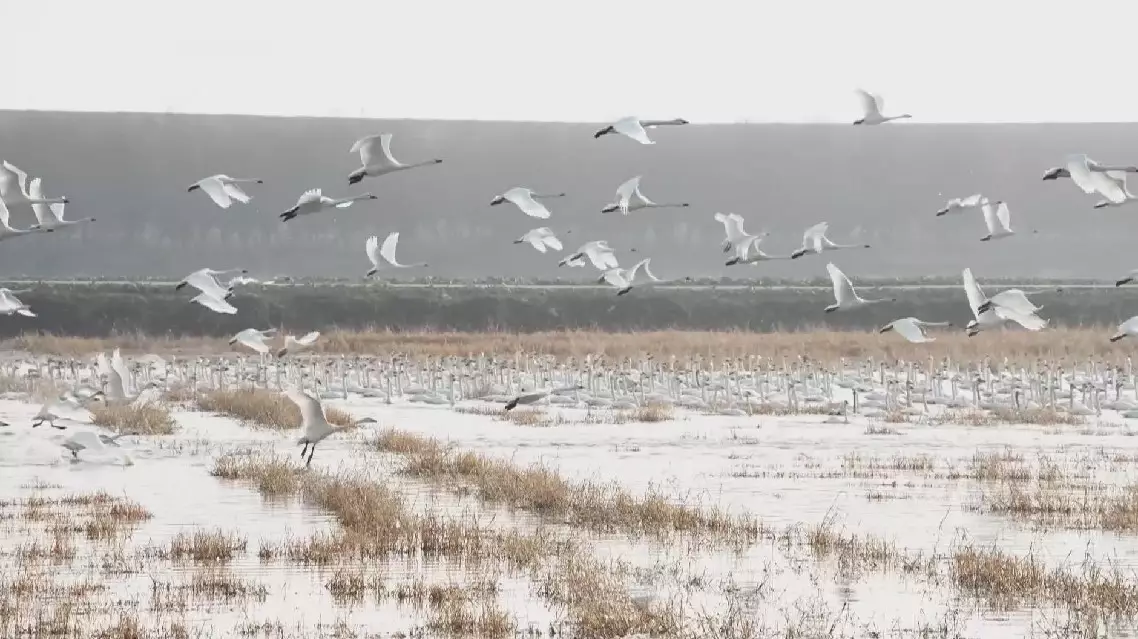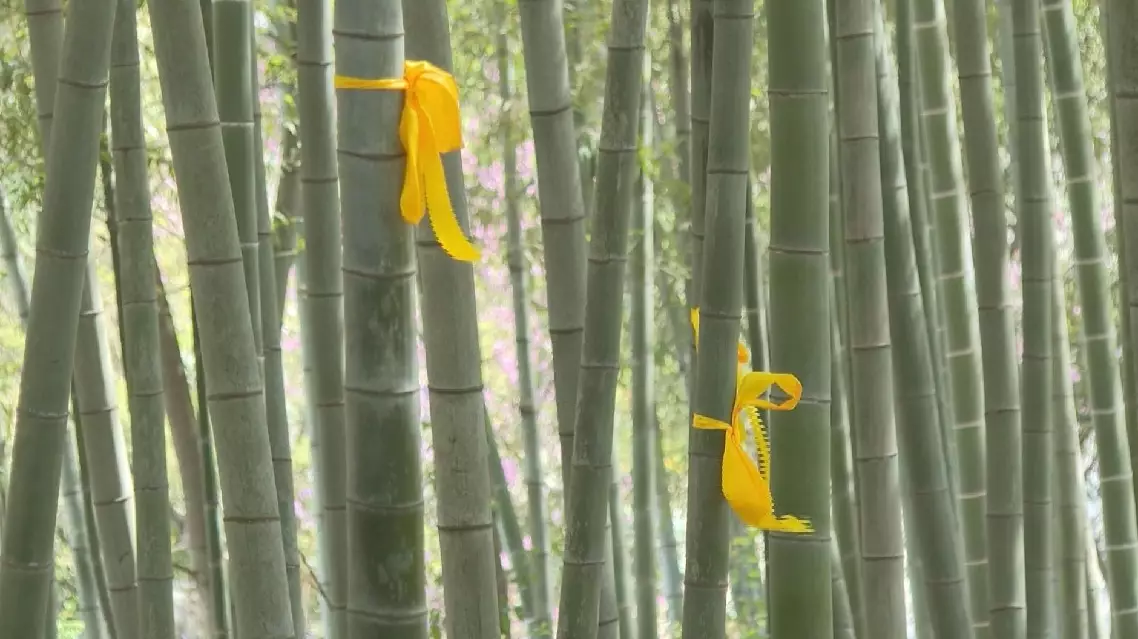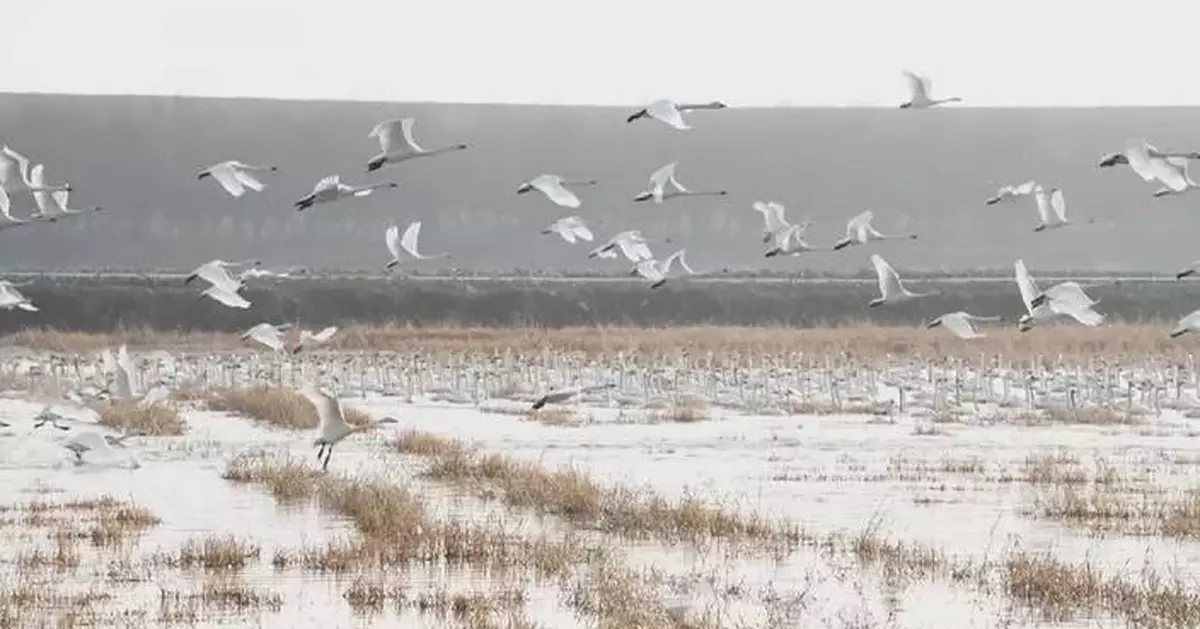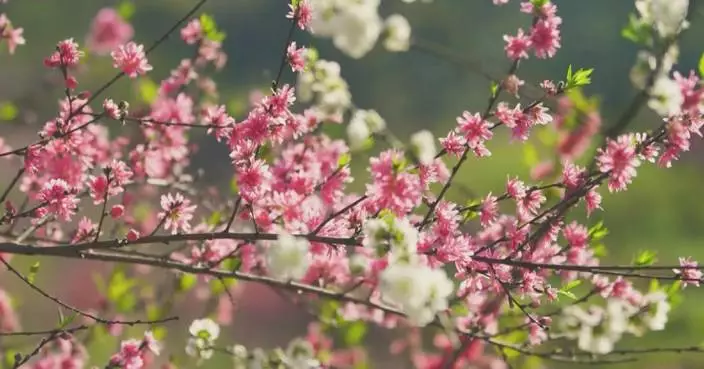As temperatures drop, swarms of migratory birds have flocked to wetland reserves in Jiangxi and Hubei provinces, enjoying their winter stopover at the wetland sanctuaries where food is abundant.
At Nanji wetland in Nanchang, east China's Jiangxi Province, a record high of over 5,000 oriental white storks, a bird species under first-class national protection in China, have been spotted recently.
According to wetland workers, the population of migratory birds has been steadily growing since fishing was banned in 2020.
In addition, relevant authorities have conducted joint law enforcement and strengthened patrols to ensure that migratory birds can safely spend the winter there.
A wetland in Yangxin County, central China's Hubei Province, has recently transformed into a lake of swans with the arrival of large numbers of little swans.
The little swans were seen foraging, playing, and swimming at the Wanghu Wetland Nature Reserve, attracting many bird enthusiasts to capture the moments in photography.
This year, the population of little swans, a species under second-class national protection, has doubled compared to previous years.
The wetland, located in the middle and lower reaches of the Yangtze River, is one of the key stops along the migratory route of birds.
It has so far welcomed more than 90,000 migratory birds of 49 species, and the number is expected to reach 100,000 by the end of January.

Migratory birds flock to eastern, central China as temperatures drop
The concept of eco-friendly burials -- ways of laying loved ones to rest that reduce environmental impact -- has grown in popularity among the Chinese people, especially over the past five years.
In China, eco-friendly burials comprise forms such as lawn burials, flowerbed burials as well as tree burials, which require minimal land. Sea burials and biodegradable urn burials that do not take up any land are also popular options.
Analysts believe eco-friendly burials will help to alleviate the strain on land resources, contribute to environmental protection, and also fulfill people's emotional needs for remembering their departed loved ones. The Ministry of Civil Affairs said in 2024, there were 194,700 ecological burials of ashes across the country, up 67 percent from 2019. Among them, 53,500 were sea burials, an increase of 26 percent over 2019, and 141,200 tree burials, an increase of 90 percent over 2019. Today, 28 provinces in China offer rewards and subsidies to families who choose eco-burials.
"More and more people begin to accept land-saving ecological burial methods. China's land-saving ecological burial methods such as sea burials and tree burials have been on the rise every year. China's land-saving ecological burial facilities have become more full-fledged as local governments have increased their efforts to build these facilities," said Liu Tao, director of the Department of Social Affairs under the Ministry of Civil Affairs.
April 4 marked this year's Qingming Festival, also known as Tomb-Sweeping Day, a traditional Chinese festival for people to pay tribute to the deceased and to worship their ancestors.
During the period around this festival, people often visit graveyards, where they traditionally pay tribute to the dead by offering food and burning incense and paper money.
In recent years, with the support from the government, many have turned to greener practices, such as offering flowers and lighting electric candles. During this year's three-day Qingming Festival holiday from Friday to Sunday, people across China made nearly 54.34 million trips to burial sites, up 14.3 percent from last year.

Eco-friendly burials take root among Chinese people


















































